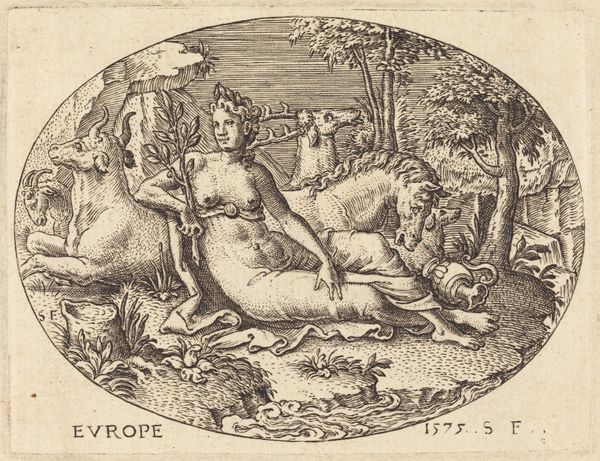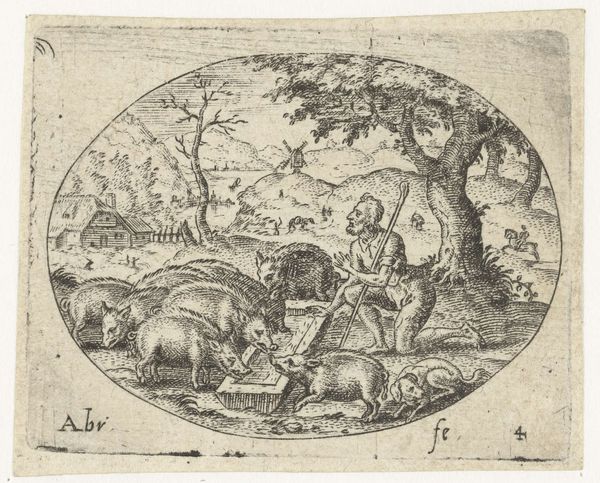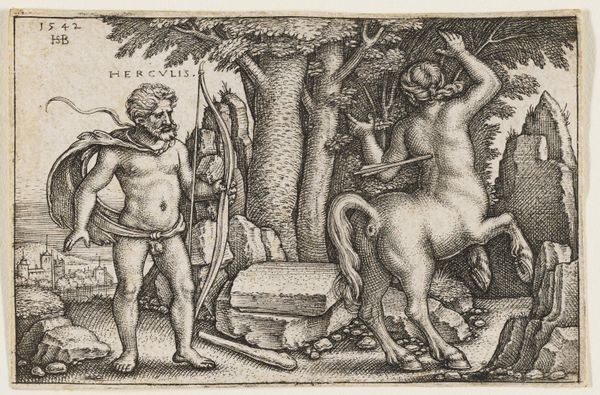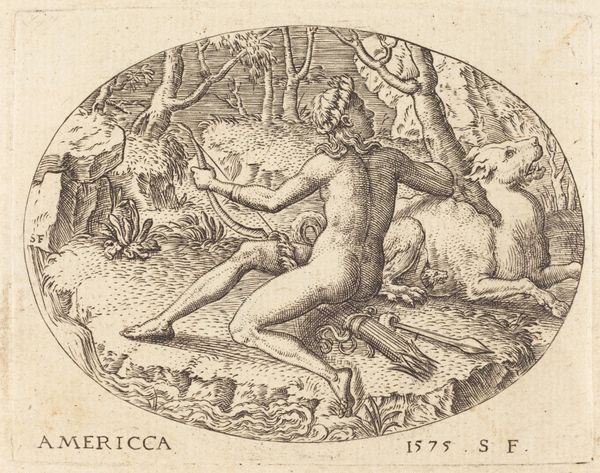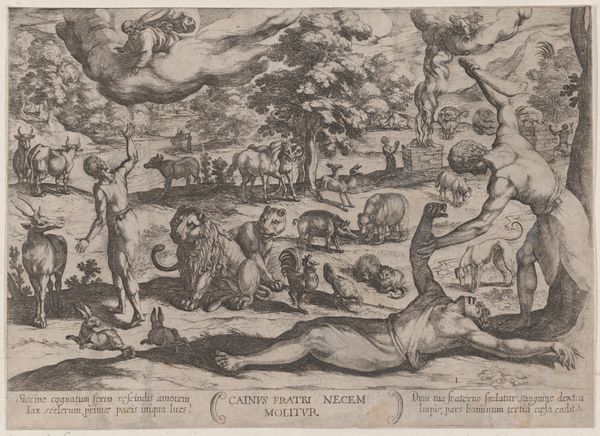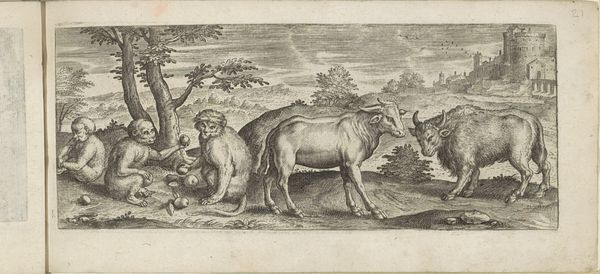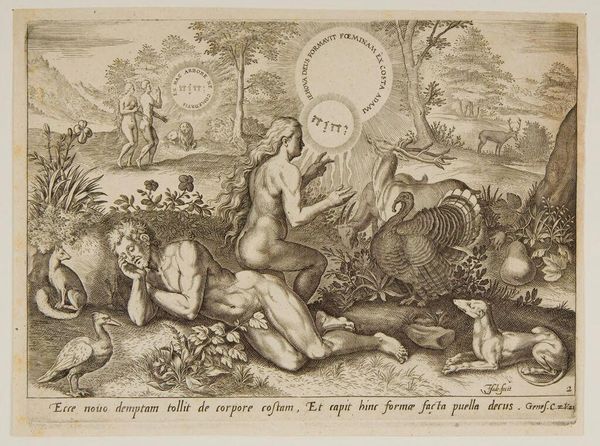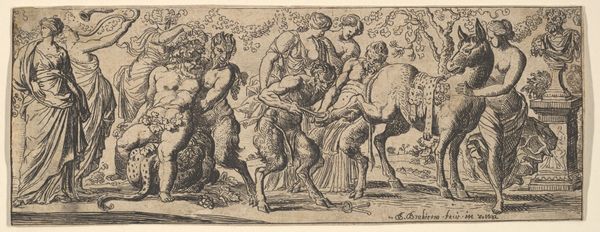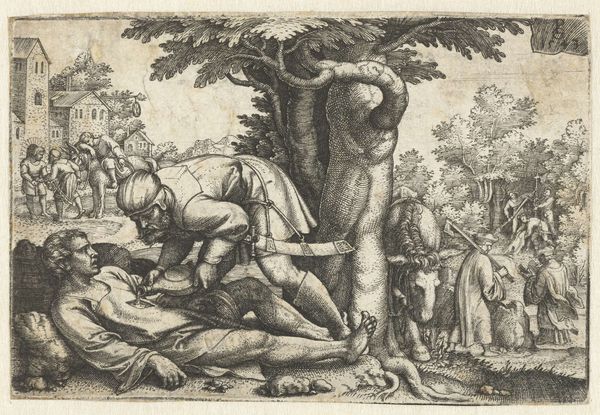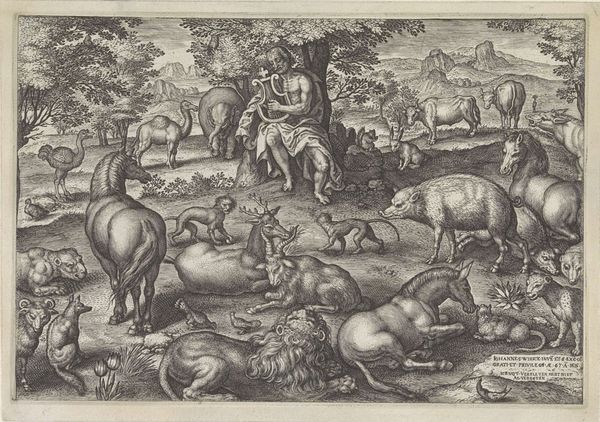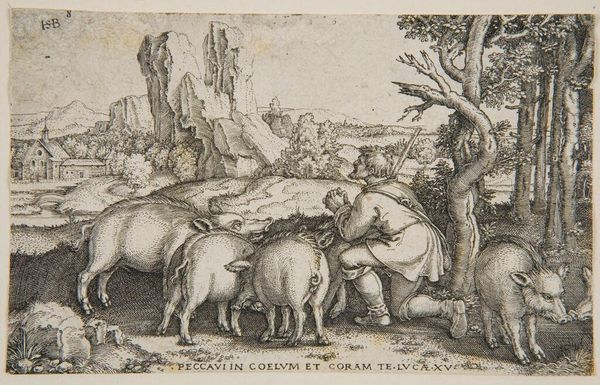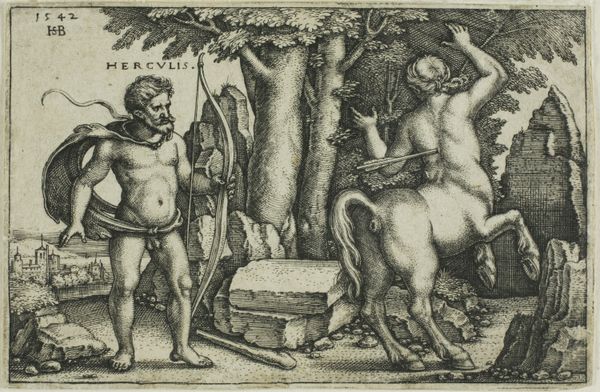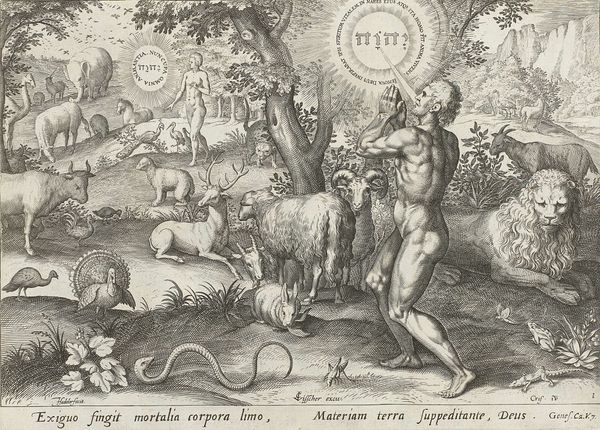
print, engraving
#
allegory
# print
#
landscape
#
mannerism
#
figuration
#
history-painting
#
engraving
Copyright: National Gallery of Art: CC0 1.0
Curator: Let's explore this engraving titled "Africa," created in 1575 by Etienne Delaune. It's an allegorical print that offers a symbolic representation of the African continent. Editor: Right away, I’m struck by the… hmm… dreamlike quality of it. It’s an ordered wilderness. There’s a central female figure lounging, almost posing, next to a rather grumpy looking lion. And in the background… an elephant that appears to be tiptoeing? It's oddly charming, but there’s also something a little unsettling about the whole composition. Curator: Unsettling in what sense? I see it more as a very structured representation, reflecting the conventions of Mannerist art. Note the idealized form of the female figure, embodying Africa, posed in a classical style, contrasting with the relatively naturalistic, if slightly inaccurate, renderings of African fauna. This interplay of ideal and observed forms is a key element. Editor: Well, inaccurate for us, perhaps! But going back to the mood – maybe “melancholic” is a better word than unsettling. It's beautiful, yes, but distant, like a carefully constructed memory. I mean, that Sphinx-like creature draped in the centre seems positively deflated. Curator: Indeed. Consider that Delaune likely never visited Africa. His image is based on secondhand accounts and prevailing European conceptions. The lion signifies strength, the elephant exoticism, and the woman’s near-nudity symbolizes perceived "naturalness". It's rife with encoded messages. Editor: Messages that speak volumes about the West’s image of the "Other" back then, wouldn’t you say? It's like peeking into the European imagination. The landscape itself feels like a stage set, carefully arranged with its various fauna… Curator: Precisely. The tight, oval composition also confines the narrative. This restriction echoes a specific worldview, limiting the reading of "Africa" within prescribed parameters. We can decode this symbolic containment, linking it to burgeoning colonial aspirations of the era. Editor: Fascinating how something so outwardly beautiful can reveal such complex, problematic histories. It makes you think about how little we might *really* see when we look at these images without any background. Curator: Absolutely. It urges us to look beyond surface aesthetics, towards deeper, critical interpretations.
Comments
No comments
Be the first to comment and join the conversation on the ultimate creative platform.
